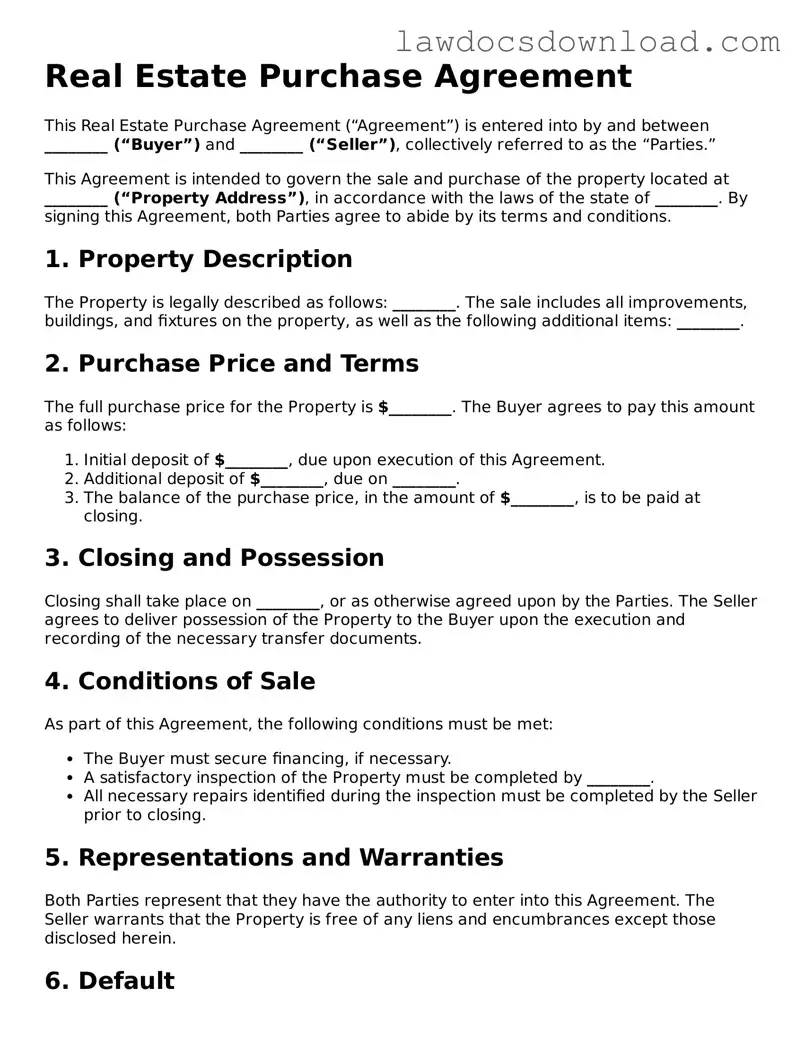Real Estate Purchase Agreement
This Real Estate Purchase Agreement (“Agreement”) is entered into by and between ________ (“Buyer”) and ________ (“Seller”), collectively referred to as the “Parties.”
This Agreement is intended to govern the sale and purchase of the property located at ________ (“Property Address”), in accordance with the laws of the state of ________. By signing this Agreement, both Parties agree to abide by its terms and conditions.
1. Property Description
The Property is legally described as follows: ________. The sale includes all improvements, buildings, and fixtures on the property, as well as the following additional items: ________.
2. Purchase Price and Terms
The full purchase price for the Property is $________. The Buyer agrees to pay this amount as follows:
- Initial deposit of $________, due upon execution of this Agreement.
- Additional deposit of $________, due on ________.
- The balance of the purchase price, in the amount of $________, is to be paid at closing.
3. Closing and Possession
Closing shall take place on ________, or as otherwise agreed upon by the Parties. The Seller agrees to deliver possession of the Property to the Buyer upon the execution and recording of the necessary transfer documents.
4. Conditions of Sale
As part of this Agreement, the following conditions must be met:
- The Buyer must secure financing, if necessary.
- A satisfactory inspection of the Property must be completed by ________.
- All necessary repairs identified during the inspection must be completed by the Seller prior to closing.
5. Representations and Warranties
Both Parties represent that they have the authority to enter into this Agreement. The Seller warrants that the Property is free of any liens and encumbrances except those disclosed herein.
6. Default
If either Party fails to comply with the terms of this Agreement, the non-complying Party is considered in default. The affected Party has the right to pursue legal remedies, including but not limited to, terminating the Agreement.
7. Amendments
Any changes to this Agreement must be made in writing and signed by both Parties.
8. Governing Law
This Agreement shall be governed by the laws of the state of ________.
9. Signatures
By signing below, the Parties agree to the terms and conditions set forth in this Real Estate Purchase Agreement.
Buyer: ________ Date: ________
Seller: ________ Date: ________
